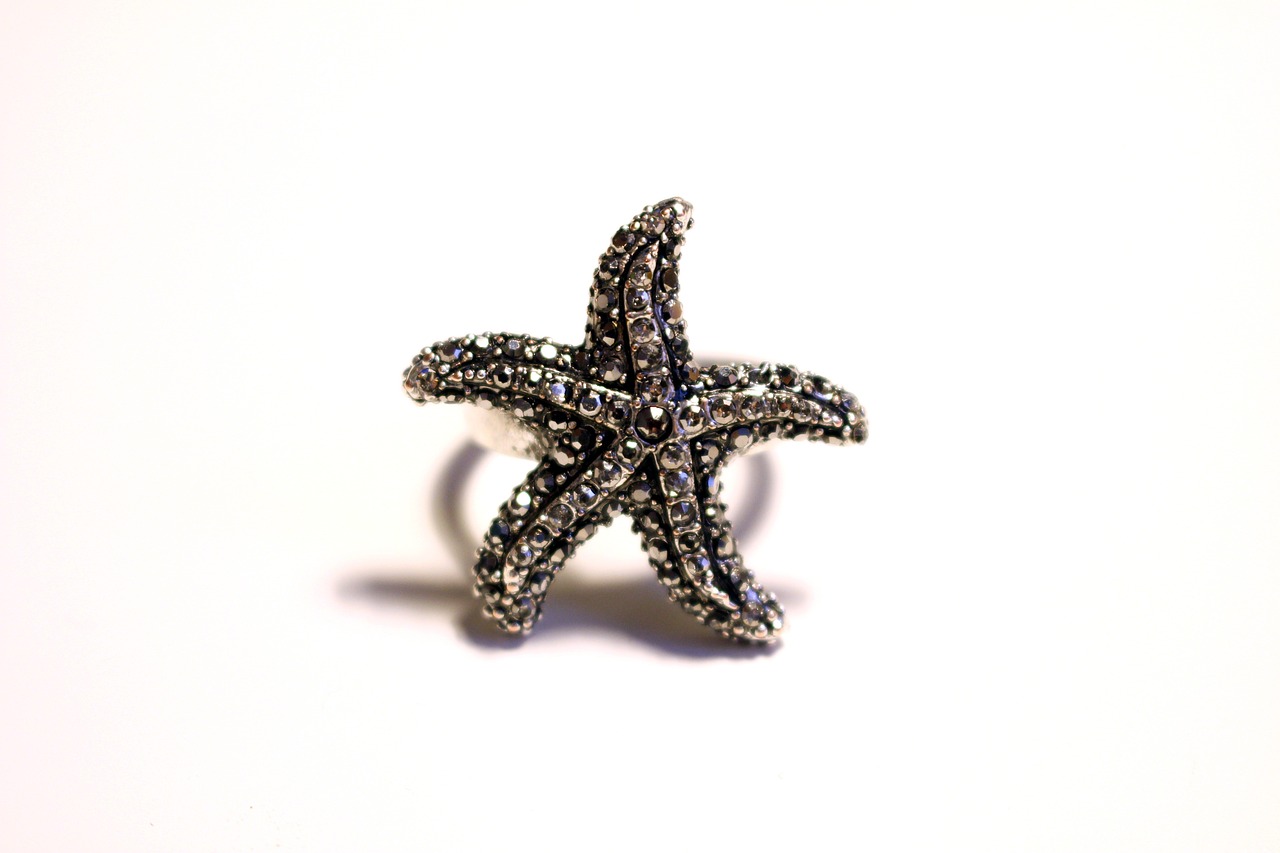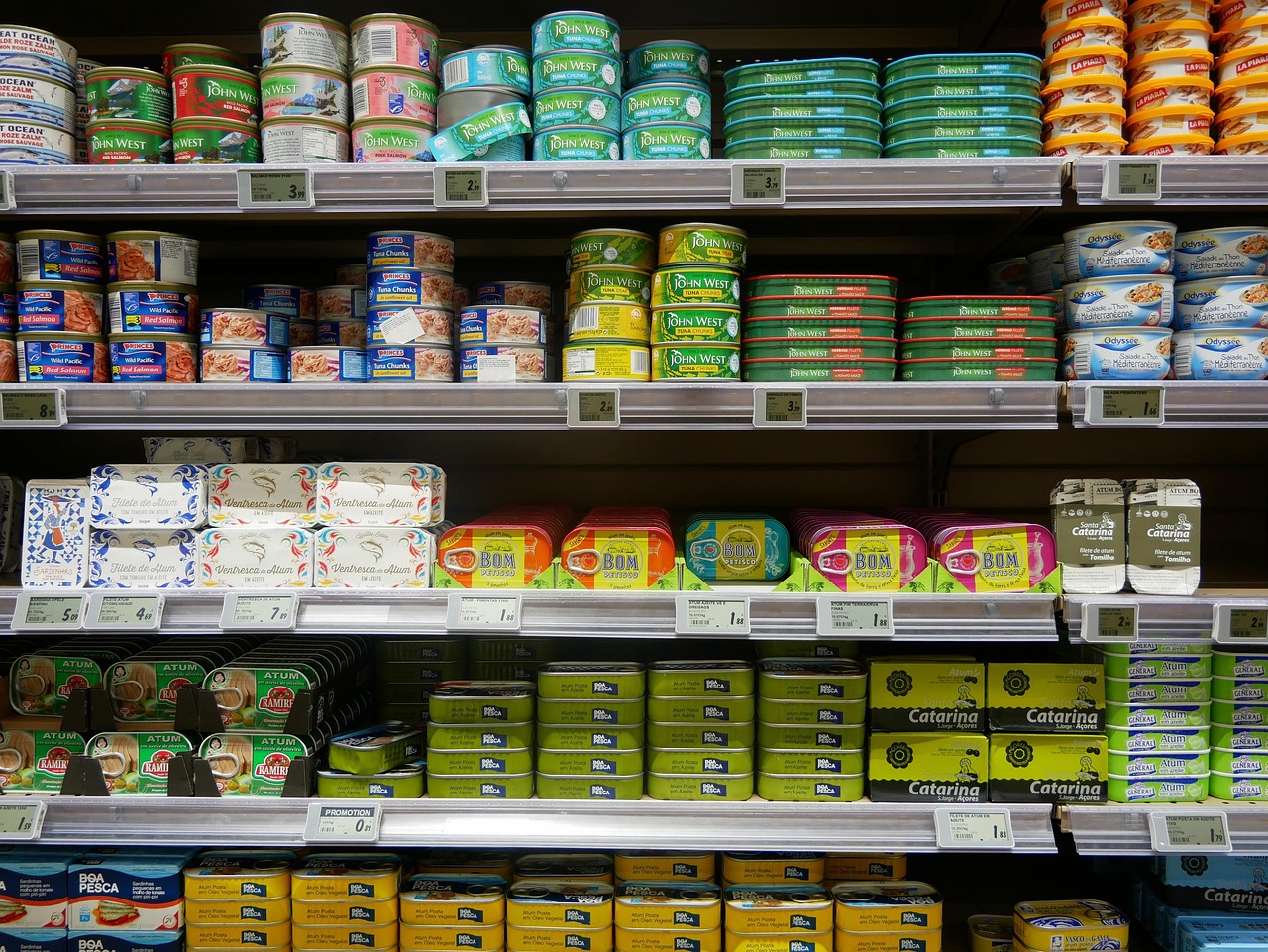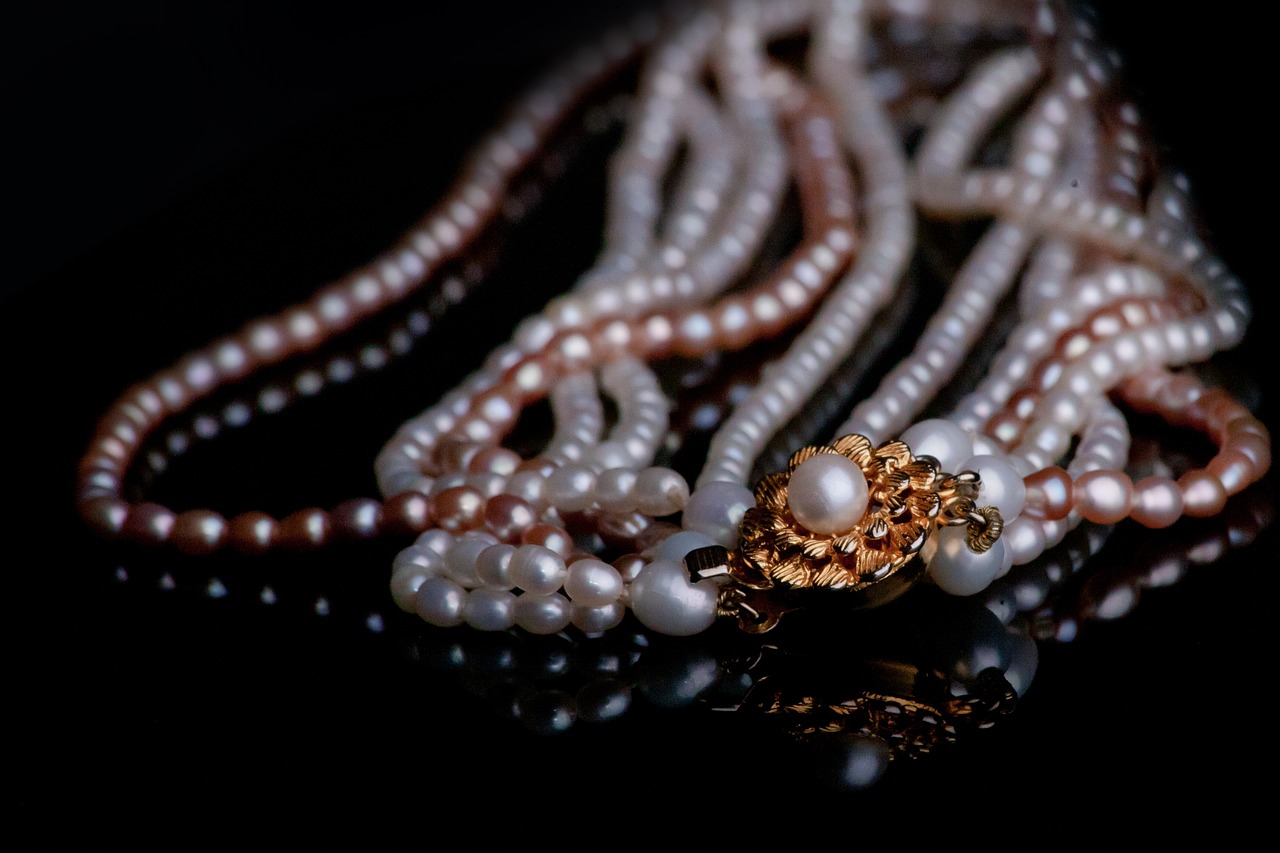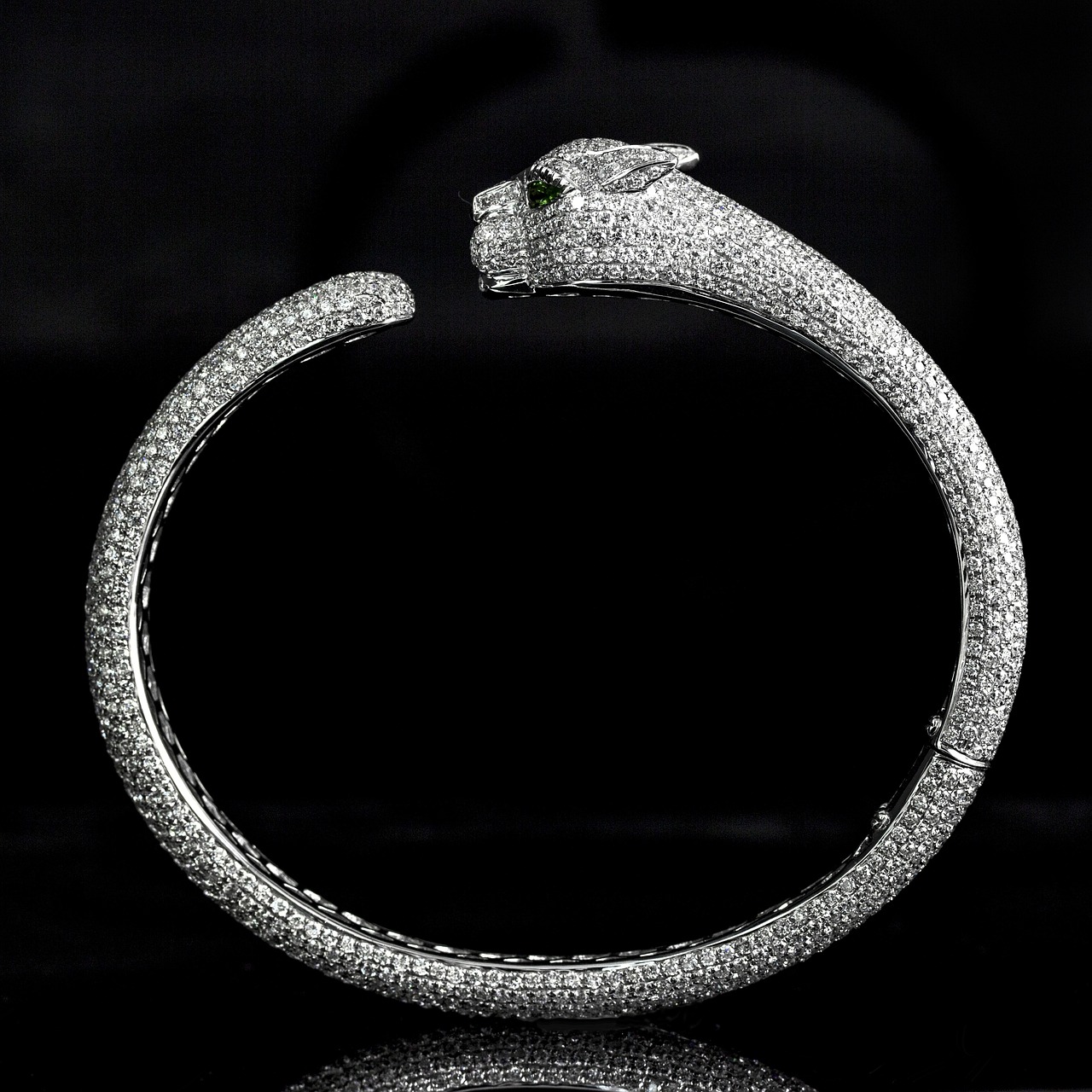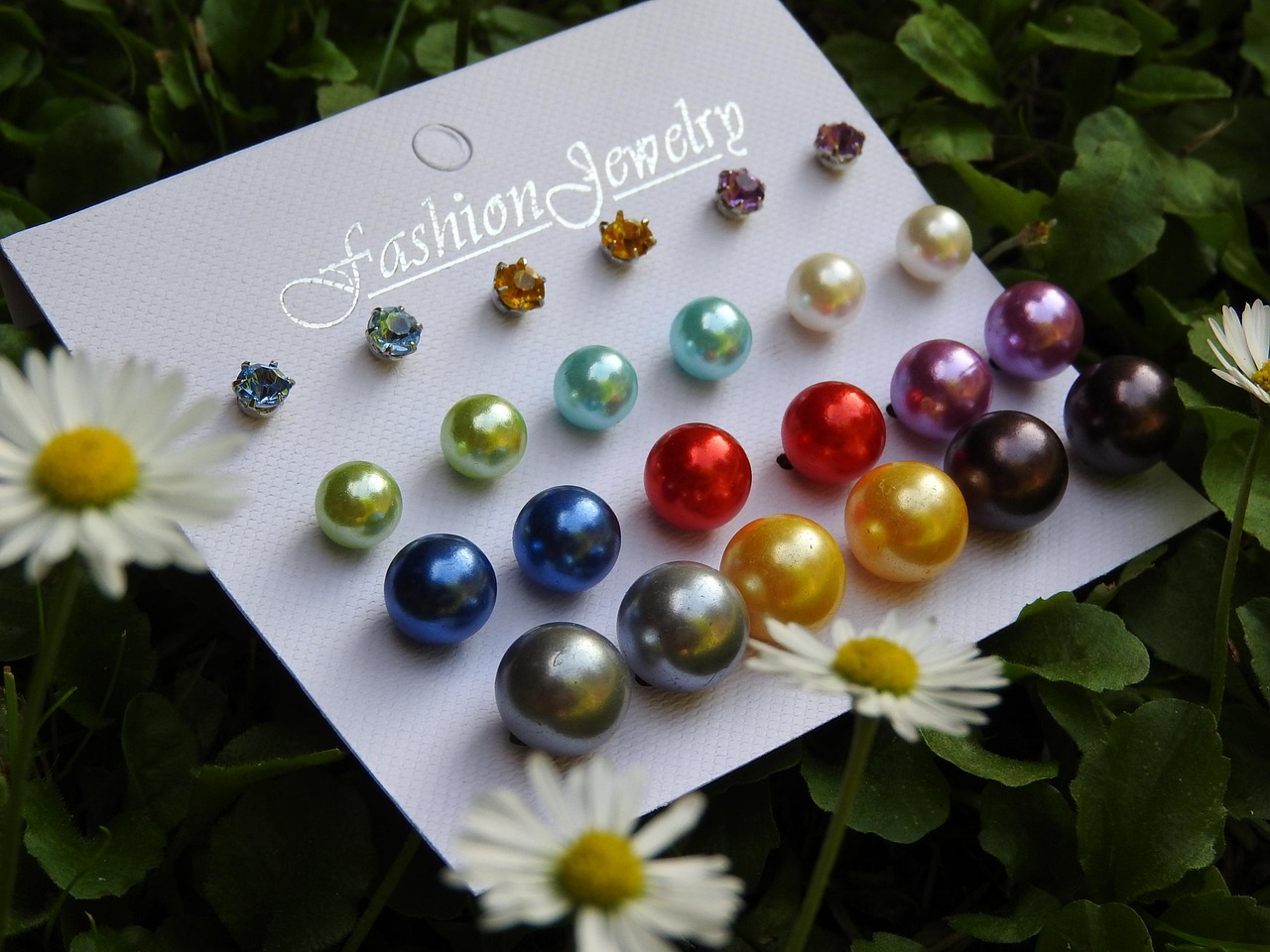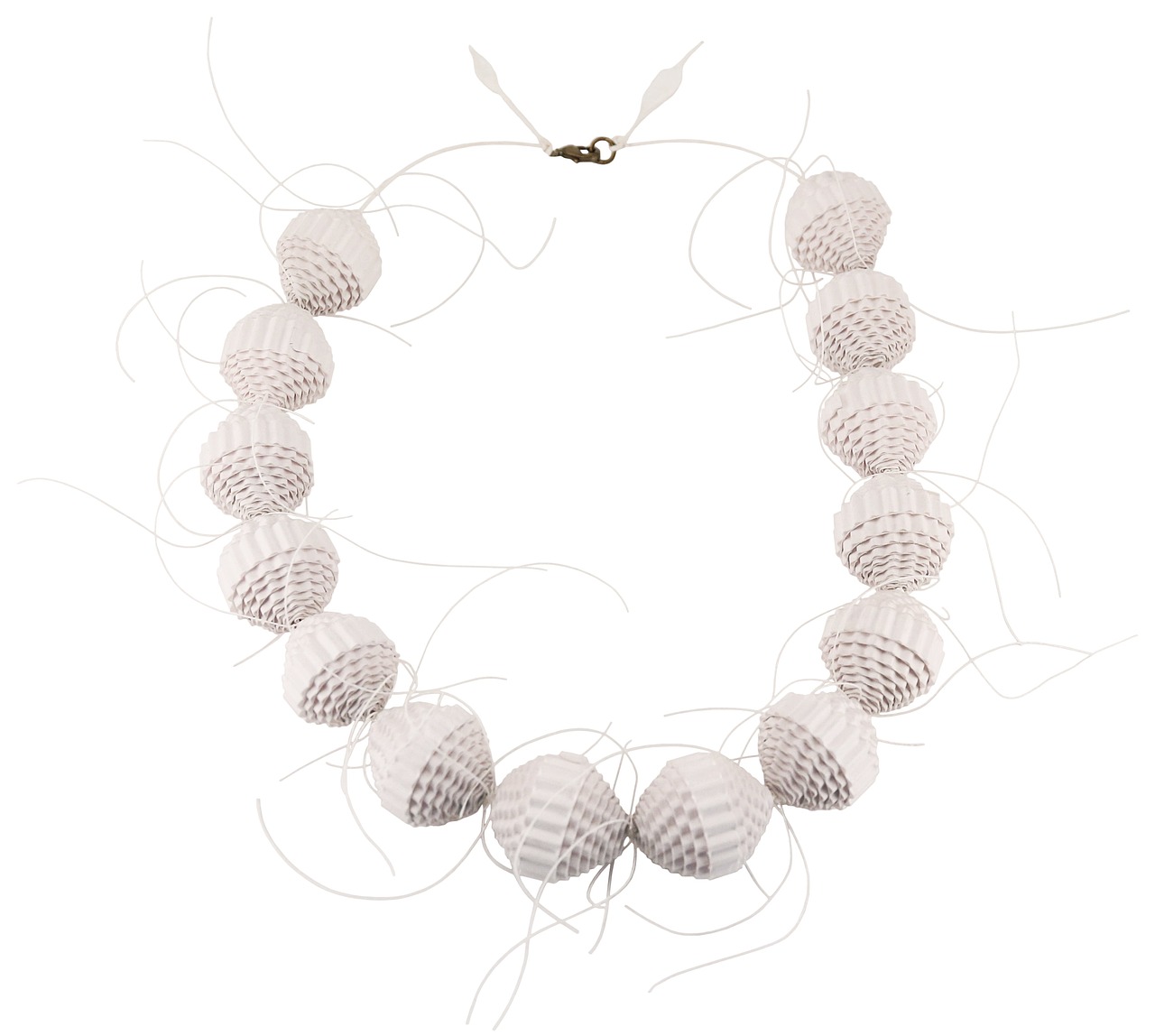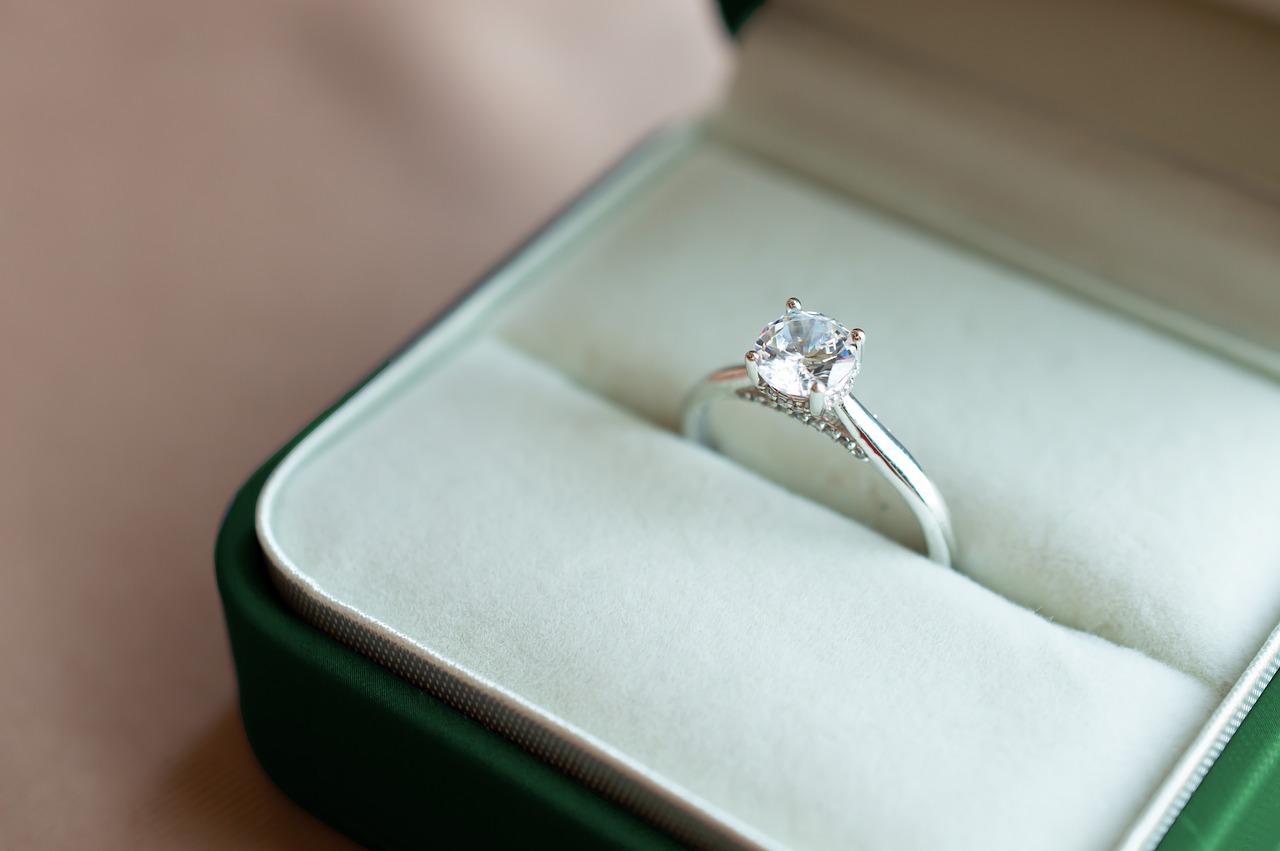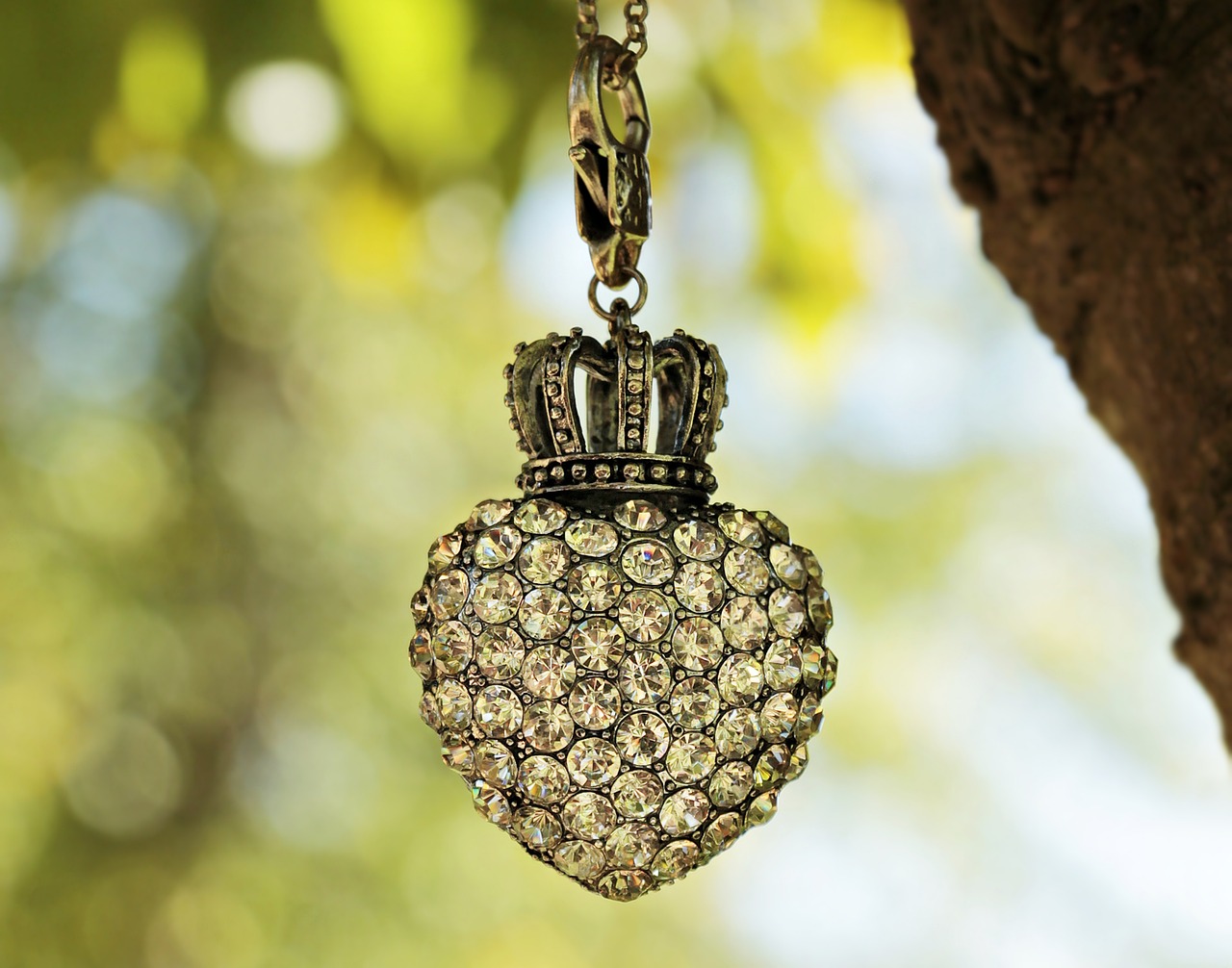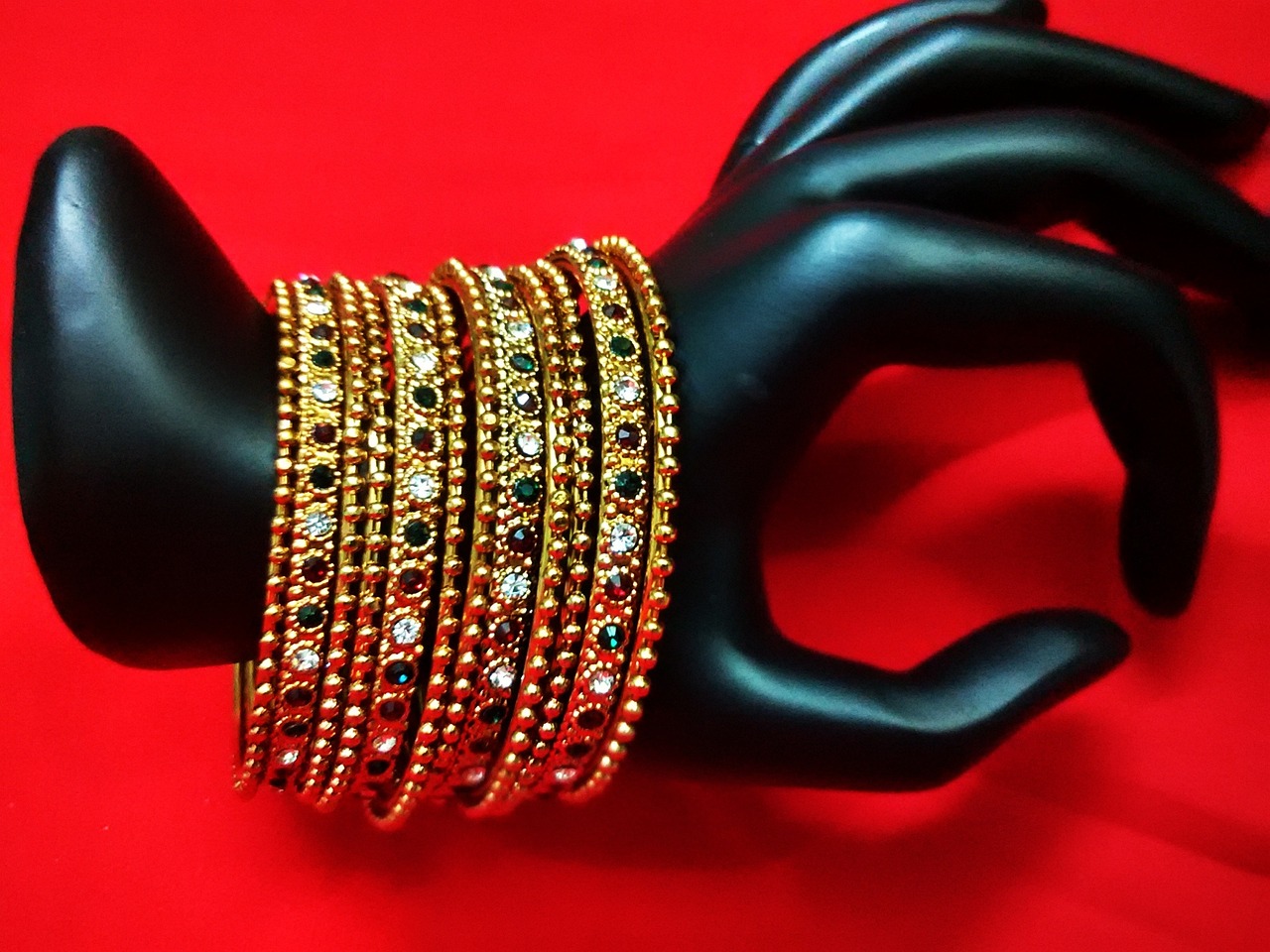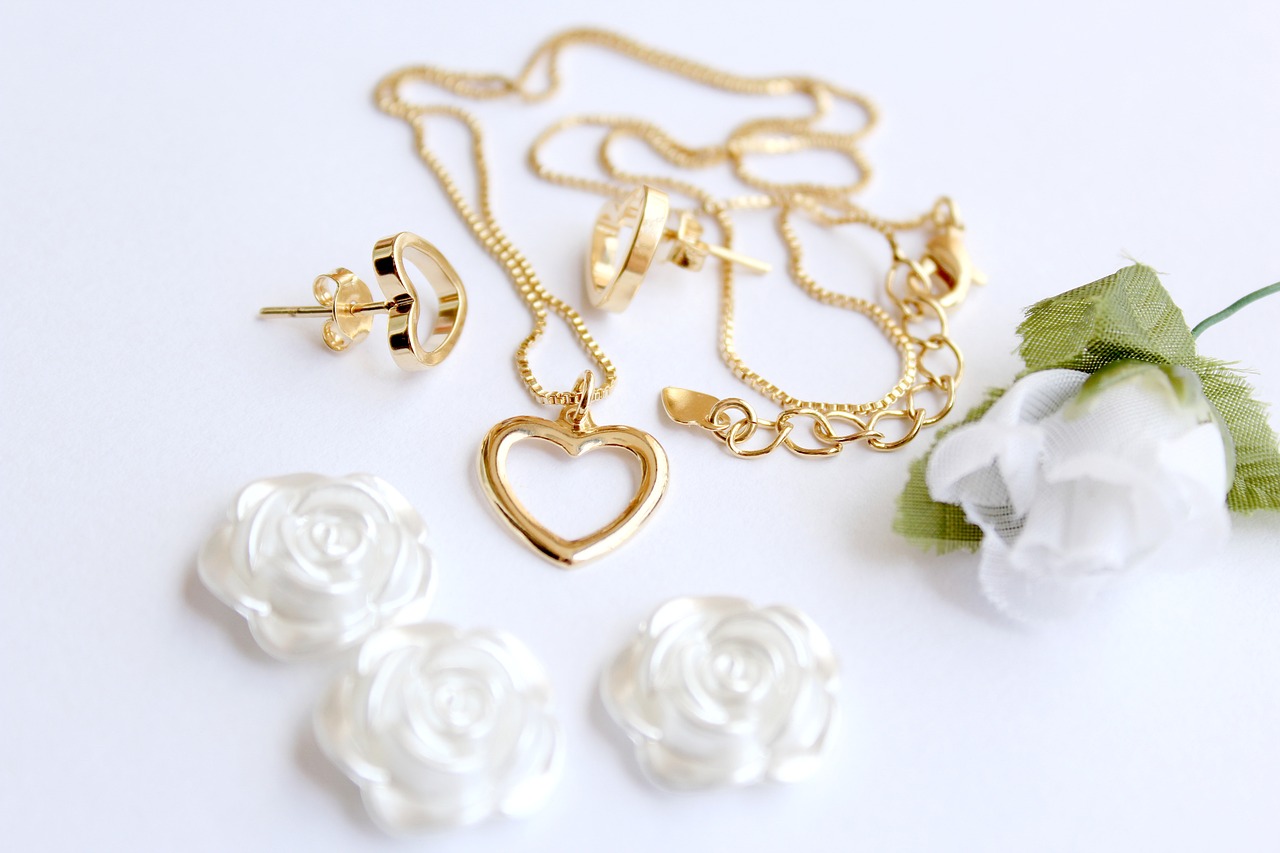This article provides a comprehensive guide on how to maintain your jewelry, detailing when to inspect and repair various types of pieces to ensure their longevity and beauty.
Jewelry is not just an accessory; it often holds sentimental value and can represent significant life events. Regular maintenance is crucial for preserving these cherished items. By understanding the importance of jewelry care, you can prevent costly repairs and ensure that your pieces remain in excellent condition for years to come.
Regular inspections are key to maintaining your jewelry. The frequency of checks depends on the type of jewelry, how often it is worn, and the materials involved. Here’s a breakdown:
- Daily Wear: Items such as rings and bracelets worn every day should be inspected at least once a month.
- Occasional Wear: Jewelry worn infrequently should be checked every few months.
Identifying the signs of wear and tear on your everyday jewelry can prevent further damage. Look for:
- Scratches on metal surfaces
- Loose stones or settings
- Worn clasps or chains
Understanding common issues can help you prepare for maintenance. Frequent repairs include:
- Loose Stones: Regularly check for stones that may have become loose in their settings.
- Broken Clasps: A broken clasp can render your jewelry unusable, so it’s essential to recognize when it needs repair.
Cleaning your jewelry is essential for maintaining its shine and integrity. Here are safe methods for different materials:
- Gold: Use a mild soap and warm water solution.
- Silver: A mixture of baking soda and water can effectively clean tarnished silver.
- Gemstones: Always check specific cleaning recommendations for each stone type.
Knowing when to consult a professional jeweler is crucial. Signs that indicate it’s time for expert assistance include:
- Complex repairs that require specialized tools.
- Valuation and appraisal for insurance purposes.
Proper storage is key to preventing damage. Consider the following:
- Jewelry Boxes: Ideal for protecting pieces from dust and scratches.
- Display Cases: Great for showcasing items, but ensure they are kept in a controlled environment.
Implementing best practices can enhance your jewelry’s lifespan. Here are some essential tips:
- Regular Inspections: Make inspections a routine part of your jewelry care.
- Documenting Repairs: Keep a log of repairs and maintenance to stay organized.
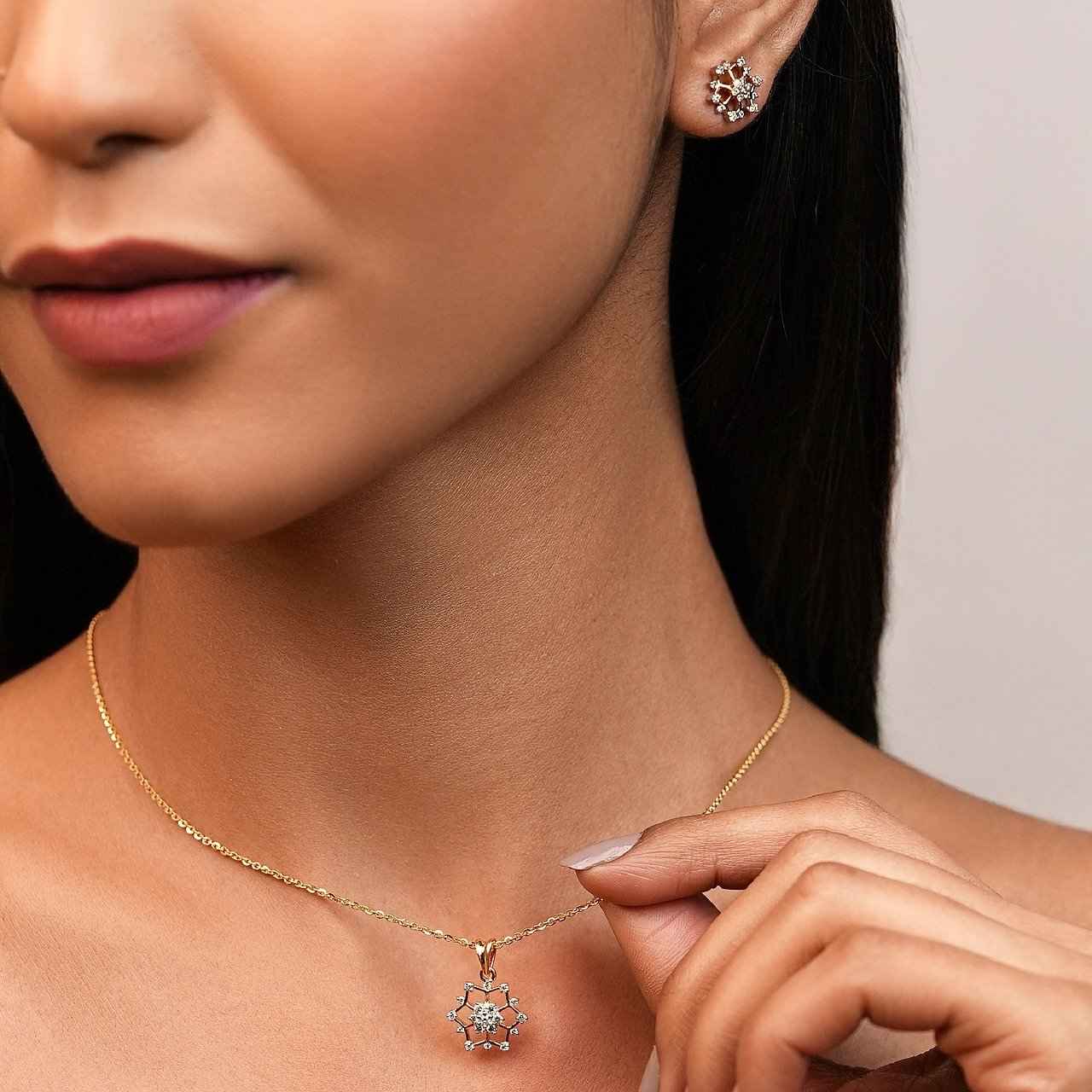
Why Is Jewelry Maintenance Important?
Jewelry is not just an accessory; it often holds sentimental value and represents significant moments in our lives. Proper jewelry maintenance is essential for preserving these cherished pieces, ensuring they remain beautiful and functional for years to come. Understanding the importance of maintaining your jewelry can save you from costly repairs and help you avoid the disappointment of losing a beloved item.
Jewelry maintenance is crucial for several reasons:
- Preservation of Value: Regular care helps maintain the aesthetic appeal and intrinsic value of your jewelry. Over time, neglect can lead to tarnishing, scratches, or even loss of stones, which diminishes its worth.
- Preventing Damage: Jewelry is susceptible to various forms of damage, including wear and tear. Regular inspections can help identify potential issues before they escalate into more significant problems that require expensive repairs.
- Enhancing Lifespan: Just like any other valuable item, jewelry benefits from regular upkeep. By taking the time to clean and inspect your pieces, you can significantly extend their lifespan.
- Emotional Connection: Many pieces of jewelry are tied to memories or milestones. Maintaining these items ensures that they continue to evoke those positive emotions for years to come.
Moreover, understanding the specific needs of different materials is vital. For example, gold may require different care than silver or gemstones. Each material has its own characteristics and vulnerabilities, which means maintenance practices should be tailored accordingly.
Additionally, regular maintenance allows you to stay informed about your jewelry’s condition. Recognizing when a piece needs repair or cleaning can prevent minor issues from becoming major headaches. For instance, a loose stone can easily be reset if caught early, but if left unattended, it might fall out and be lost forever.
Another essential aspect of jewelry maintenance is ensuring that your pieces are stored correctly. Improper storage can lead to scratches, tangles, and even breakage. Investing in a good jewelry box or organizer can keep your items safe and in good condition.
In conclusion, the significance of jewelry maintenance cannot be overstated. By implementing a regular care routine, you not only preserve the beauty and value of your pieces but also ensure that they remain a source of joy and connection for years to come. Taking these proactive steps is a small investment that pays off in the long run, allowing you to cherish your jewelry without the worry of damage or loss.
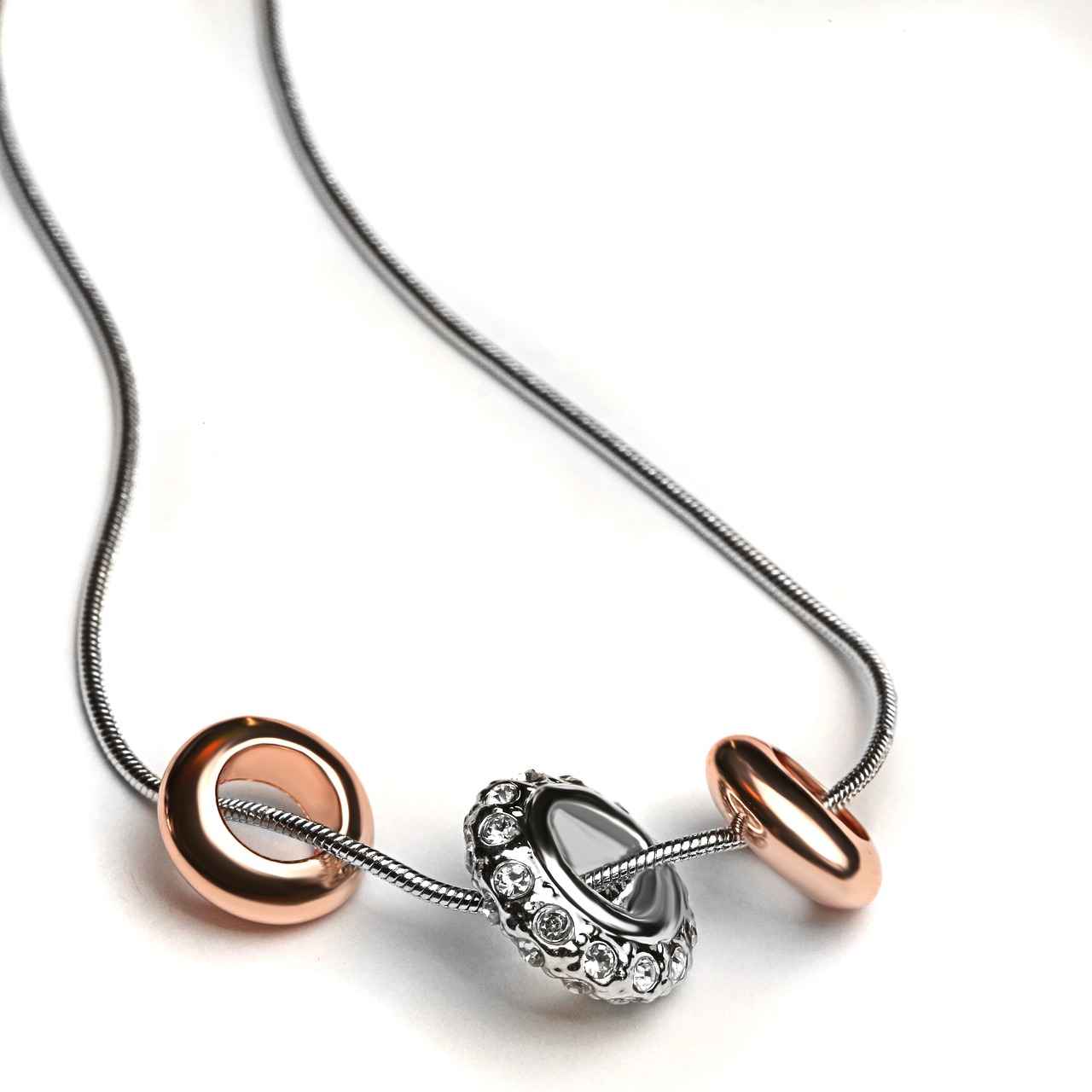
How Often Should You Inspect Your Jewelry?
Jewelry is not just an accessory; it often holds sentimental value and can represent significant investments. Therefore, understanding how often you should inspect your jewelry is crucial for maintaining its beauty and integrity. Regular inspections can help you identify potential issues before they escalate into costly repairs, allowing you to enjoy your pieces for years to come.
Regular inspections are key to maintaining your jewelry. The frequency of these checks can vary significantly based on several factors, including the type of jewelry, how often you wear it, and the materials it is made from. Here’s a detailed guide on how often to inspect your jewelry:
- Daily Wear Jewelry: Items such as rings, bracelets, and necklaces that you wear daily should be inspected at least once a month. Look for signs of wear, such as loose stones, scratches, or damage to the clasp.
- Occasional Wear Jewelry: For pieces worn less frequently, such as special occasion earrings or necklaces, a thorough inspection every three to six months is advisable. Ensure that settings are secure and that there are no visible signs of wear.
- Seasonal Changes: With changing seasons, your jewelry may be exposed to different environmental factors. It’s a good idea to inspect your jewelry at the start of each season to address any potential issues caused by humidity or temperature changes.
The way you use your jewelry plays a significant role in determining how often you should check it. For example, jewelry worn during physical activities or in harsh conditions is more susceptible to damage. Consider the following:
- Active Lifestyle: If you lead an active lifestyle and wear jewelry during workouts or sports, inspect your pieces weekly. The stress from physical activity can loosen settings and cause wear.
- Work Environment: If your job involves manual labor or exposure to chemicals, inspect your jewelry more frequently. Daily checks are recommended to ensure that your pieces remain in good condition.
Different materials require different care and inspection frequencies:
- Gold and Platinum: These metals are relatively durable, but they can still scratch or lose their luster. Inspect them every few months for any signs of wear.
- Silver: Silver tarnishes over time, so regular inspections every month can help maintain its shine. Clean and polish as needed.
- Gemstones: Precious and semi-precious stones can be more fragile. Inspect jewelry with gemstones every month to ensure that settings are secure and stones are intact.
While regular inspections are essential, knowing the signs that indicate your jewelry needs immediate attention can save you from costly repairs:
- Loose Stones: If you notice a stone wobbling in its setting, it’s crucial to have it repaired immediately.
- Scratches and Dents: Visible damage can weaken the structure of your jewelry, making it more prone to breakage.
- Broken Clasps: A broken clasp can result in lost pieces. Address this issue right away to prevent losing your jewelry.
In conclusion, understanding how often to inspect your jewelry is vital for its maintenance. By considering factors like wear frequency, material type, and environmental influences, you can create a personalized inspection schedule. Regular checks will not only help preserve the beauty of your pieces but also ensure that they remain safe and secure for years to come.
Daily Wear vs. Occasional Wear
When it comes to jewelry maintenance, understanding the difference between daily wear and occasional wear pieces is crucial. Each type of jewelry demands a different level of attention and care, which can significantly impact its longevity and appearance.
Jewelry that you wear every day, such as engagement rings, wedding bands, and favorite necklaces, are subjected to constant exposure to environmental factors and physical wear. It’s essential to conduct regular inspections on these items, ideally on a monthly basis. This frequency allows you to catch early signs of wear, such as:
- Loose stones: Regularly check for any stones that may have become dislodged.
- Scratches: Look for surface scratches that can dull the shine of your jewelry.
- Weak clasps: Ensure that clasps are functioning properly to avoid losing pieces.
On the other hand, jewelry that is worn less frequently, such as statement pieces or heirloom items, may not need as frequent inspections. However, annual checks are still recommended to ensure that these pieces remain in good condition. During these inspections, focus on:
- Overall integrity: Check for any signs of damage that may have occurred during storage.
- Cleaning needs: Assess whether the piece requires a thorough cleaning to restore its original luster.
The frequency of inspections is vital because it helps in identifying problems before they escalate into costly repairs. For instance, a loose stone can be easily reset if caught early, but if left unchecked, it may result in the loss of the stone altogether. This is particularly important for daily wear items that are exposed to more wear and tear.
Identifying the signs of daily wear can save you from potential heartbreak and financial loss. Look for:
- Discoloration: Changes in color can indicate tarnishing or damage.
- Increased movement: If a stone feels loose or wobbly, it needs immediate attention.
- Frayed chains: Chains that show signs of wear are at risk of breaking.
To maintain the beauty and integrity of your daily wear jewelry, consider the following care tips:
- Regular cleaning: Use safe cleaning solutions to remove dirt and oils.
- Safe storage: When not in use, store pieces in a soft pouch or lined jewelry box to prevent scratches.
- Professional check-ups: Schedule a professional inspection at least once a year.
Understanding the differences in inspection frequencies for daily wear and occasional wear jewelry is essential for maintaining their beauty and longevity. By implementing regular checks and appropriate care, you can ensure that your cherished pieces remain in excellent condition for years to come.
Signs of Daily Wear
Jewelry is not just an accessory; it often holds sentimental value and can be a significant investment. Therefore, identifying the signs of wear and tear on your everyday jewelry is crucial to prevent further damage and ensure its longevity. This section will explore the common indicators that your pieces may need immediate attention.
Understanding the typical signs of wear can help you take proactive measures. Here are some key indicators you should look for:
- Scratches and Dullness: Over time, rings, bracelets, and necklaces can accumulate scratches that diminish their shine. If your jewelry looks dull, it may be time for a professional cleaning.
- Loose Stones: If you notice any stones shifting in their settings, this is a clear sign that immediate repair is needed to avoid losing the stone altogether.
- Discoloration: Changes in color, especially in metals like silver or gold, can indicate tarnishing or corrosion. Regular polishing can help maintain their luster.
- Broken Clasps: If clasps are not functioning properly, your jewelry is at risk of falling off and getting lost. Inspect clasps regularly for signs of wear.
- Frayed Chains: Chains can become weak over time, especially if they are worn daily. Look for any signs of fraying or thinning links.
Ignoring these signs can lead to costly repairs or even the loss of your cherished pieces. By addressing wear and tear promptly, you not only maintain the aesthetic appeal of your jewelry but also preserve its value.
Here are some practical tips to help you maintain your jewelry:
- Regular Inspections: Make it a habit to inspect your jewelry regularly, especially pieces you wear daily. Look for the signs mentioned above.
- Safe Storage: When not in use, store your jewelry in a safe, dry place to prevent scratches and other damage.
- Professional Maintenance: Schedule periodic check-ups with a jeweler to ensure your pieces are in good condition.
If you identify any signs of wear, it’s essential to take action:
- Consult a Jeweler: A professional can provide insights into necessary repairs and maintenance.
- Avoid DIY Repairs: While it may be tempting to fix minor issues yourself, improper handling can lead to more significant problems.
- Document Repairs: Keep a record of any repairs or maintenance performed on your jewelry to track its condition over time.
By being vigilant and proactive about your jewelry care, you can ensure that your pieces remain beautiful and intact for years to come. Remember, your jewelry deserves the same level of care and attention as any other valuable possession.
Occasional Wear Considerations
Jewelry is often a cherished possession, holding sentimental value and aesthetic appeal. While some pieces are worn daily, others are reserved for special occasions. Occasional wear jewelry may not require the same level of maintenance as everyday pieces, but it still deserves attention to ensure its condition remains pristine. Understanding what to look for during inspections can help you maintain the beauty and integrity of your jewelry.
Even if a piece is worn infrequently, periodic inspections are crucial. Over time, factors such as environmental conditions, improper storage, and even natural wear can affect your jewelry. Regular checks can help identify potential issues before they escalate into costly repairs.
- Settings and Mountings: Check for any signs of looseness or damage. Stones should be securely set; if they wiggle or shift, it’s time for a professional evaluation.
- Chains and Clasps: Inspect chains for any signs of wear or breakage. Clasps should function smoothly; if they are stiff or do not close securely, they may need replacement.
- Surface Condition: Look for scratches, tarnishing, or discoloration. These issues can often be remedied with proper cleaning or polishing.
- Beads and Pearls: For jewelry made with beads or pearls, check the stringing material for fraying or weakness. Loose beads can lead to a complete loss of the piece if not addressed.
Cleaning should be part of your maintenance routine, even for jewelry that isn’t worn often. Dust and oils can accumulate, dulling the shine of your pieces. Depending on the material, you may choose to clean your jewelry every few months. Gentle cleaning methods are recommended, such as using a soft cloth or a mild soap solution, to avoid damaging delicate surfaces.
How you store your jewelry can significantly impact its condition. Use individual compartments or soft pouches to prevent scratching and tangling. Avoid exposing your jewelry to extreme temperatures, humidity, or direct sunlight, as these factors can cause damage over time.
If you notice any significant issues during your inspection, don’t hesitate to seek professional help. Jewelers can provide expert cleaning, repairs, and appraisals to ensure your pieces are in top shape. Regular visits to a jeweler can also help you stay informed about the best practices for maintaining your collection.
In summary, while occasional wear jewelry may not require as frequent maintenance as daily wear items, it still needs regular checks to ensure its longevity. By paying attention to key areas, cleaning regularly, and storing properly, you can keep your cherished pieces looking beautiful for years to come.
Seasonal Maintenance Tips
Seasonal changes can significantly impact the condition of your jewelry. As temperatures fluctuate and humidity levels rise or fall, different materials can react in various ways. To ensure your treasured pieces remain in pristine condition year-round, it’s essential to adjust your maintenance routine according to the seasons. Here’s a detailed guide on how to effectively care for your jewelry throughout the year.
As the weather warms up, it’s an excellent time to inspect your jewelry for any signs of wear that may have developed during the winter months. Begin by cleaning your pieces thoroughly to remove any residue or tarnish that may have accumulated. Use a gentle solution suitable for your jewelry type, and consider professional cleaning for more delicate items. Additionally, check for loose stones or weakened clasps, especially in rings and bracelets that may have been subject to more wear during colder months.
Summer brings heat and humidity, which can be detrimental to certain jewelry materials. Keep your jewelry safe by avoiding exposure to chlorine and saltwater, as these can cause damage or discoloration. When engaging in outdoor activities, consider removing your jewelry to prevent accidental loss or damage. Regularly inspect your pieces for signs of wear, particularly those made from softer metals or stones that can be more susceptible to scratches and chips.
As the seasons shift, it’s time to prepare your jewelry for cooler temperatures. This is an ideal moment to store away summer pieces and bring out your fall favorites. Ensure that all items are clean and dry before storage to prevent tarnishing or damage. Use fabric-lined boxes or pouches to protect your jewelry from scratches and environmental factors. Additionally, check for any repairs needed before the holiday season.
Winter can be harsh on jewelry, particularly with the combination of cold weather and indoor heating. Keep an eye out for temperature fluctuations that may cause metals to expand and contract, potentially loosening stones. It’s crucial to avoid exposing your jewelry to extreme temperatures. When not in use, store your pieces in a cool, dry place, and consider using anti-tarnish strips in your storage box to prevent tarnishing.
- Regular Inspections: Make it a habit to inspect your jewelry every few months. Look for any signs of wear, such as loose stones or worn clasps.
- Proper Cleaning: Use appropriate cleaning methods for different materials. For instance, while silver can be polished, pearls require a gentler touch.
- Safe Storage: Store jewelry separately to avoid scratching. Use soft cloth pouches or individual compartments in a jewelry box.
- Document Repairs: Keep a record of any repairs or maintenance performed. This can help track the condition of your jewelry over time.
By adapting your jewelry maintenance routine to align with seasonal changes, you can ensure that your pieces remain beautiful and intact for years to come. Remember, proactive care is key to preserving the integrity and value of your jewelry collection.
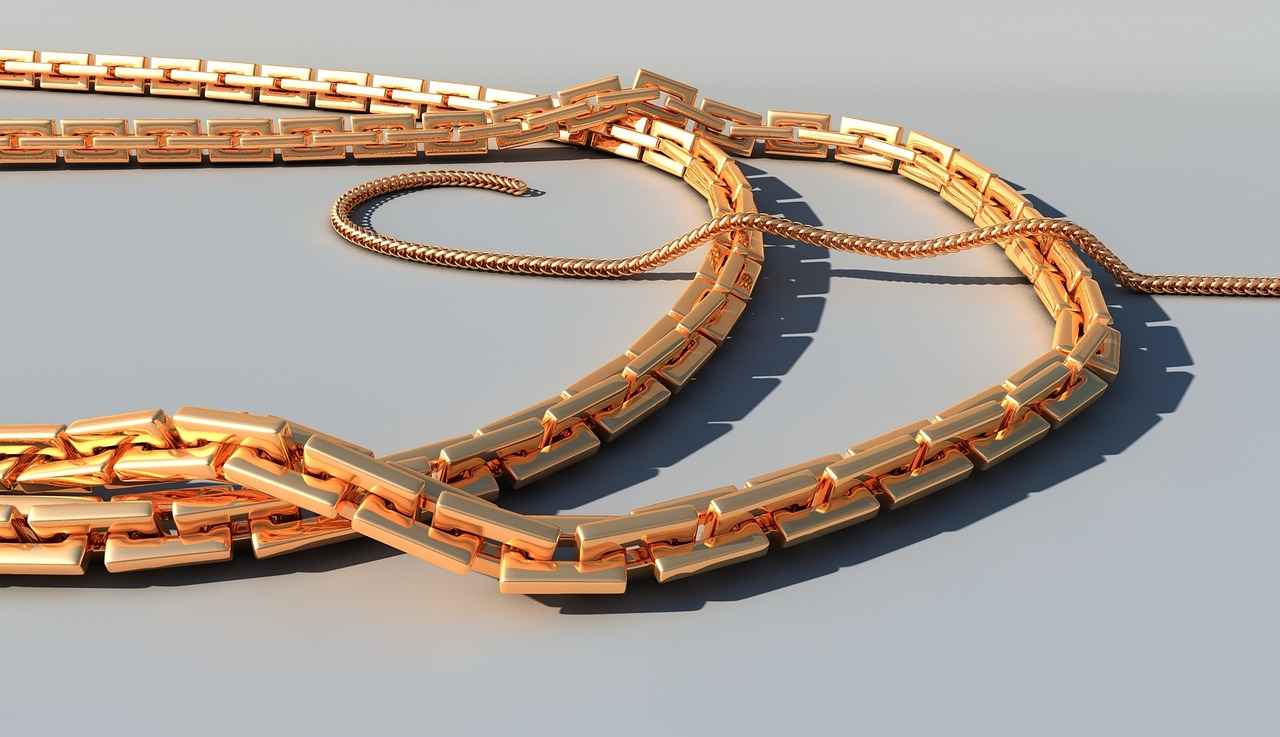
What Are the Common Jewelry Repairs?
Jewelry is not just an accessory; it often carries sentimental value and can represent significant milestones in our lives. To keep your treasured pieces looking their best, it’s essential to understand the common repairs that may arise over time. This knowledge allows you to be proactive about maintenance, preventing minor issues from escalating into costly repairs.
Jewelry can endure wear and tear, especially if worn frequently. Understanding the types of repairs commonly needed can help you prepare for maintenance. Here are some frequent issues to watch for:
- Loose Stones: One of the most common problems is loose stones in rings, necklaces, or earrings. If you notice a stone that seems to wiggle or shift, it may be at risk of falling out. Regularly inspect your pieces for any signs of looseness.
- Broken Clasps: Clasps are essential for securing necklaces and bracelets. A broken clasp can lead to lost jewelry. Look for signs of wear, such as difficulty in opening or closing the clasp, or visible damage.
- Damaged Settings: The setting holds the stones in place, and any damage can compromise the security of the stones. Check for bent prongs or cracks in the metal that could lead to a loose stone.
- Worn Chains: Chains can experience wear over time, leading to breaks or kinks. Inspect your chains regularly, especially if they are worn daily.
- Scratches and Dents: Precious metals can scratch and dent, particularly with daily wear. Regular polishing can help maintain their appearance, but deeper scratches may require professional attention.
Being proactive is key to jewelry maintenance. Here are some tips to help you identify issues early:
- Regular Inspections: Make it a habit to inspect your jewelry periodically. Look for any signs of wear or damage, especially after wearing them for special occasions.
- Professional Appraisals: Consider having your jewelry appraised by a professional every few years. They can spot issues that may not be obvious to the untrained eye.
- Use a Loupe: A jeweler’s loupe can help you examine the details of your jewelry closely, making it easier to spot loose stones or damaged settings.
Some repairs are best left to professionals. If you notice any of the following, it may be time to consult a jeweler:
- Complex Repairs: If a piece requires intricate work, such as resetting a stone or repairing a broken shank, it’s wise to seek professional help.
- Valuation and Appraisal: Regular appraisals can help you understand the current value of your jewelry, which is crucial for insurance purposes.
By understanding the common types of jewelry repairs and being proactive in your maintenance efforts, you can ensure that your cherished pieces remain beautiful and secure for years to come. Remember, regular inspections and timely repairs can save you both money and heartache in the long run.
Loose Stones
in jewelry can be a frustrating issue for many jewelry owners. Whether in rings, necklaces, or bracelets, these loose gems can lead to significant damage or loss if not addressed promptly. Understanding how to identify loose stones and the necessary steps for repair is crucial for maintaining the integrity and beauty of your cherished pieces.
Identifying loose stones is the first step in preventing further issues. Here are some signs to look for:
- Movement: Gently touch the stone with your finger. If it moves or feels unstable, it may be loose.
- Gaps: Look for any visible gaps between the stone and its setting. This can indicate that the stone has shifted.
- Missing Stones: In some cases, stones may fall out entirely. Regular checks can help catch this before it happens.
If you’ve identified a loose stone, it’s important to take action quickly. Here are the steps you should follow:
- Assess the Damage: Determine how loose the stone is and whether it can be fixed at home or needs professional help.
- Temporary Fix: If you’re unable to visit a jeweler immediately, you can use a small amount of clear nail polish around the base of the stone as a temporary measure.
- Visit a Professional: For a permanent solution, take your jewelry to a qualified jeweler. They can reset the stone securely and check for any additional issues.
Ignoring loose stones can lead to more severe problems, including:
- Loss of the Stone: A loose stone may fall out and be lost forever, especially if it’s a valuable or sentimental piece.
- Damage to the Setting: Continuing to wear jewelry with loose stones can damage the setting itself, leading to costly repairs.
- Safety Concerns: If a stone falls out while wearing, it can pose a risk to others, especially in crowded environments.
To minimize the risk of loose stones in your jewelry, consider the following preventive measures:
- Regular Inspections: Make it a habit to inspect your jewelry regularly for any signs of wear and tear.
- Professional Maintenance: Schedule periodic checks with a jeweler to ensure all stones are secure and settings are intact.
- Proper Storage: Store your jewelry in a safe and organized manner to prevent unnecessary movement and friction that can loosen stones.
By taking these steps and remaining vigilant, you can protect your jewelry from the common issue of loose stones. Remember, timely action can save not only your stones but also the sentimental and monetary value of your jewelry.
Broken Clasps and Chains
Broken clasps can significantly hinder the functionality of your jewelry. They are often the unsung heroes of your favorite pieces, ensuring they stay securely fastened. When a clasp fails, it can render a necklace, bracelet, or even a pair of earrings unusable. Therefore, understanding how to recognize when a clasp needs repair is crucial for maintaining the integrity of your jewelry collection.
It is essential to regularly inspect your jewelry, particularly the clasps. Look for the following signs that indicate a clasp may need repair:
- Loose Connections: If the clasp feels wobbly or does not close securely, it may be time for a repair.
- Visible Wear: Signs of wear, such as scratches or bent components, can compromise the clasp’s effectiveness.
- Difficulty Opening or Closing: If you find it challenging to open or close the clasp, it may require adjustment or replacement.
When you identify a broken clasp, you have a few options for repair or replacement:
- DIY Repair: For minor issues, such as a bent clasp, you may be able to gently reshape it using pliers. Ensure you are cautious to avoid further damage.
- Replacement Clasps: If the clasp is beyond repair, consider purchasing a similar replacement. Many craft stores offer a variety of clasps that can be easily attached by a jeweler or even by yourself if you have the right tools.
- Professional Repair: For intricate or valuable pieces, it’s advisable to consult a professional jeweler. They have the expertise to ensure that the repair is both secure and aesthetically pleasing.
To avoid future clasp issues, consider the following preventive measures:
- Proper Storage: Store your jewelry in a way that minimizes movement and friction. Use soft pouches or dedicated jewelry boxes.
- Avoiding Excessive Force: Be gentle when fastening and unfastening clasps to reduce wear and tear.
- Regular Maintenance: Schedule periodic inspections of your jewelry to catch any potential issues before they escalate.
In summary, understanding how to recognize the signs of a broken clasp and knowing the best methods for fixing or replacing it can keep your jewelry in excellent condition. Regular maintenance and preventive care will not only extend the life of your pieces but also ensure that they remain beautiful and functional for years to come.

How to Clean Your Jewelry Safely?
Cleaning your jewelry is essential for maintaining its shine and integrity. Over time, dirt, oils, and other residues can accumulate on your treasured pieces, dulling their appearance. In this guide, we will explore safe cleaning methods tailored for various materials, including gold, silver, and gemstones, ensuring your jewelry remains as stunning as the day you bought it.
Regular cleaning not only enhances the visual appeal of your jewelry but also helps in identifying any potential issues like loose stones or damaged settings. By keeping your jewelry clean, you can enjoy its beauty while also prolonging its lifespan.
- Gold Jewelry: To clean gold, mix a few drops of mild dish soap with warm water. Soak your gold pieces for about 15-20 minutes, then gently scrub with a soft-bristled toothbrush. Rinse with clean water and dry with a soft cloth.
- Silver Jewelry: Silver tarnishes over time, but you can restore its shine with a simple solution of baking soda and water. Create a paste, apply it to the silver, and gently rub it in. Rinse thoroughly and dry with a soft cloth.
- Gemstones: Different gemstones require different care. For most, a gentle soak in warm, soapy water followed by a soft cloth wipe is sufficient. However, be cautious with porous stones like opals and pearls, as they may require specialized cleaning methods.
Creating your own cleaning solutions can be both cost-effective and safe. Here are a few recipes:
- Vinegar Solution: Mix equal parts of vinegar and water for a gentle cleaner that works well on most metals.
- Club Soda: Soak your jewelry in club soda for a few minutes to restore its sparkle.
While regular cleaning at home is beneficial, there are times when professional services are necessary. Consider seeking help if:
- Your jewelry has intricate designs that are hard to clean.
- You notice any signs of damage, such as loose stones or broken clasps.
- You have antique or high-value pieces that require specialized care.
To maintain the beauty of your jewelry, incorporate these best practices:
- Store Properly: Keep your jewelry in a soft-lined box or pouch to prevent scratches.
- Avoid Chemicals: Remove jewelry before using cleaning products or swimming in chlorinated pools.
- Regular Inspections: Check for any signs of wear or damage regularly to catch issues early.
By following these tips and methods, you can ensure that your jewelry remains in excellent condition, allowing you to enjoy its beauty for years to come. Remember, a little care goes a long way in preserving the allure of your precious items!
Homemade Cleaning Solutions
When it comes to maintaining the beauty and integrity of your jewelry, cleaning is an essential aspect that should not be overlooked. While many commercial cleaners are available, creating your own can be both effective and economical. Below, you will find a collection of safe and simple recipes that can help restore the shine and luster of various types of jewelry.
Homemade cleaning solutions offer several advantages:
- Cost-Effective: You can save money by using common household ingredients.
- Eco-Friendly: Homemade cleaners are often free from harsh chemicals, making them safer for the environment.
- Customizable: You can adjust the recipes based on the specific needs of your jewelry.
Before diving into specific recipes, it’s important to know some common ingredients you can use:
- Baking Soda: A gentle abrasive that can help remove tarnish.
- White Vinegar: Effective for cutting through grime and restoring shine.
- Dish Soap: A mild detergent that can safely clean various materials.
- Olive Oil: Great for polishing metals and adding shine.
Ingredients:- 1 cup warm water- 1 tablespoon dish soapInstructions:1. Mix the warm water and dish soap in a bowl.2. Soak your gold jewelry for 15-20 minutes.3. Gently scrub with a soft toothbrush, then rinse with warm water and dry with a soft cloth.
Ingredients:- 1/2 cup white vinegar- 2 tablespoons baking sodaInstructions:1. Combine vinegar and baking soda in a bowl (it will fizz).2. Let it sit for 2-3 minutes.3. Immerse the silver jewelry for 2-3 hours, then rinse with cold water and dry with a soft cloth.
Ingredients:- 1 cup warm water- 1 tablespoon dish soapInstructions:1. Mix the warm water and dish soap in a bowl.2. Soak the gemstone jewelry for 10-15 minutes.3. Gently scrub with a soft brush, rinse with warm water, and dry with a soft cloth.
While homemade cleaners are generally safe, consider the following precautions:
- Test First: Always test a small, inconspicuous area first to ensure no adverse reactions.
- Avoid Abrasives: Use soft brushes or cloths to prevent scratching.
- Store Properly: After cleaning, store your jewelry in a dry place to prevent tarnishing.
By utilizing these , you can effectively maintain the beauty of your jewelry without breaking the bank. Remember to adjust the recipes as needed based on the specific materials of your pieces. Regular cleaning will ensure your jewelry remains a cherished part of your collection for years to come.
Professional Cleaning Services
When it comes to maintaining your jewelry, can play a crucial role in preserving the beauty and integrity of your cherished pieces. While regular at-home care is essential, there are times when seeking the expertise of a professional is necessary. This article explores when to seek professional help and what you can expect from a jewelry cleaning service.
Jewelry can accumulate dirt, oils, and residues over time, diminishing its shine and appeal. Professional cleaning is particularly beneficial for intricate designs, settings with multiple stones, or pieces made from delicate materials. These professionals have the tools and knowledge to clean your jewelry safely and effectively, ensuring that your items remain in excellent condition.
It’s important to recognize the signs that indicate your jewelry requires professional attention. Here are some key situations:
- Heavy Tarnish or Discoloration: If your silver or gold jewelry appears dull or tarnished, a professional cleaning can restore its luster.
- Loose Stones: If you notice any stones wobbling in their settings, it’s time to consult a jeweler. They can secure the stones properly and prevent loss.
- Complex Designs: Jewelry with intricate designs often requires specialized cleaning methods that only professionals can provide.
- Valuable Pieces: High-value items, such as heirlooms or designer pieces, should be cleaned by experts to avoid any risk of damage.
When you take your jewelry to a professional cleaning service, you can expect a thorough examination and a detailed cleaning process:
- Inspection: The jeweler will first assess your jewelry for any damage, loose stones, or wear that needs attention.
- Cleaning Techniques: Depending on the material and condition, they may use ultrasonic cleaners, steam cleaning, or specialized solutions to ensure a deep clean.
- Repairs: If any repairs are needed, the jeweler will provide recommendations and may offer to fix them during the cleaning process.
- Final Touch: After cleaning, your jewelry will be polished to enhance its shine and appeal.
The cost of professional cleaning services can vary widely based on several factors, including:
- Type of Jewelry: Simple pieces are generally less expensive to clean than intricate designs.
- Condition: Jewelry in poor condition may require more extensive work, increasing the cost.
- Location: Prices can also vary depending on your geographic location and the jeweler’s reputation.
As a general guideline, it’s advisable to have your jewelry professionally cleaned at least once a year. However, pieces that are worn daily may benefit from more frequent professional cleanings, especially if they show signs of wear or tarnish.
In summary, while regular at-home care is vital for your jewelry, professional cleaning services are an important part of maintaining its beauty and value. By knowing when to seek professional help and what to expect, you can ensure your jewelry remains a cherished part of your collection for years to come.
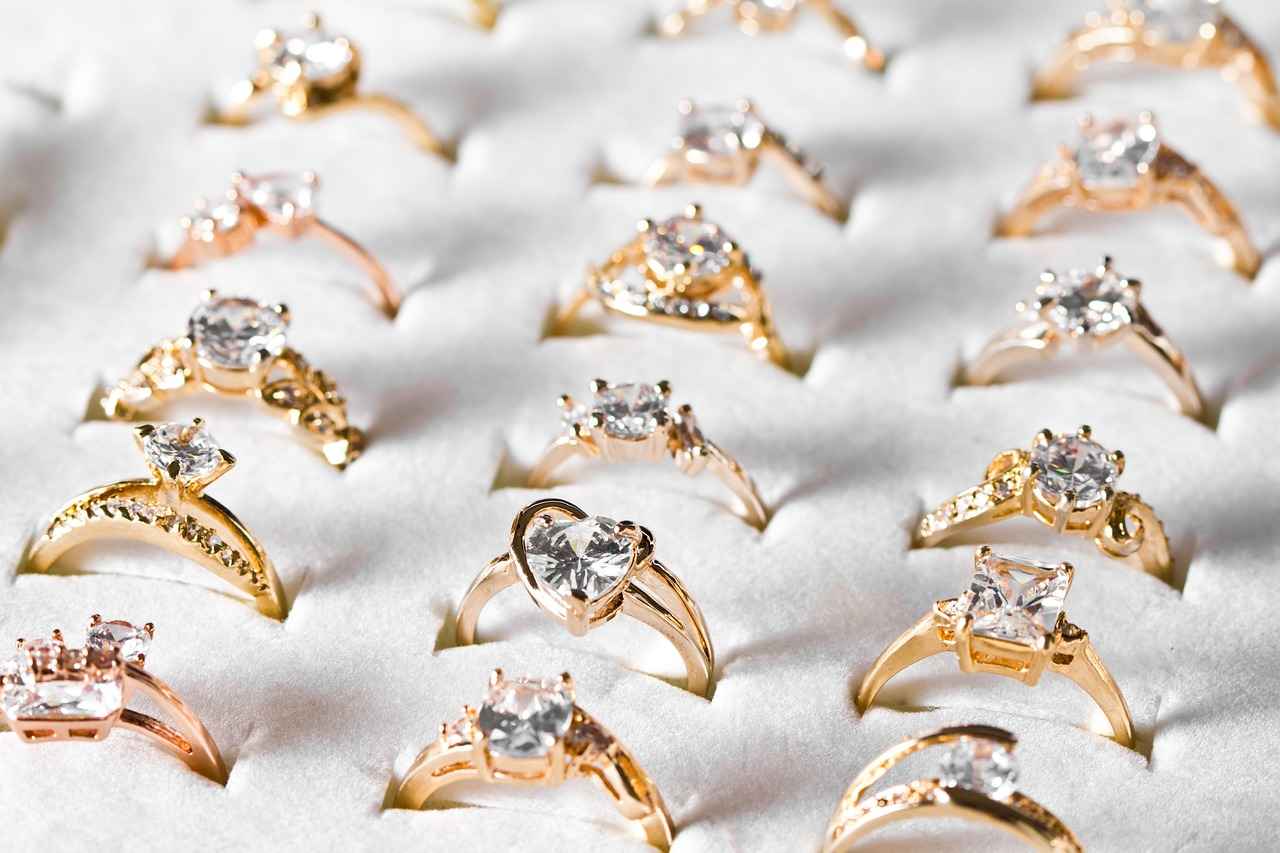
When to Seek Professional Help?
Jewelry is not just an accessory; it often holds significant sentimental value. Therefore, understanding when to seek professional help for your jewelry is essential for its longevity and beauty. Here, we delve into the various scenarios that indicate it’s time to consult a professional jeweler, ensuring your cherished pieces remain in top condition.
- Visible Damage: If you notice cracks, scratches, or any visible damage on your jewelry, it’s crucial to seek professional help. These issues can worsen if left untreated.
- Loose Stones: A stone that feels loose in its setting can easily fall out and get lost. If you detect any movement, consult a jeweler immediately.
- Broken Clasps or Chains: If your jewelry has a broken clasp or chain, it’s not only inconvenient but can also lead to loss. A jeweler can repair or replace these components effectively.
- Discoloration: Changes in color, especially in gold or silver jewelry, can indicate tarnishing or other issues. A professional cleaning can restore the original luster.
- Frequent Repairs: If you find yourself taking the same piece back for repairs repeatedly, it may be time to assess whether it needs a more permanent solution.
Some issues are too complex for DIY fixes. For example, ring resizing or stone replacement often necessitates professional tools and expertise. Attempting to fix these problems at home can lead to further damage, making it imperative to consult a jeweler.
Regular appraisals are essential for ensuring that your jewelry is properly insured and valued. When should you have your jewelry appraised? It’s advisable to get an appraisal every few years or after significant changes, such as a major repair or alteration. This practice not only helps in insurance claims but also provides peace of mind regarding the value of your investment.
While you can perform basic cleaning at home, there are times when a professional cleaning is warranted. If your jewelry is heavily tarnished or has accumulated dirt in hard-to-reach areas, a jeweler can provide a thorough clean without risking damage to delicate components.
Finding a reputable jeweler is crucial for ensuring that your pieces are in good hands. Look for someone with certifications and positive customer reviews. Ask for recommendations from friends or family to find a jeweler who specializes in the type of jewelry you own.
Knowing when to seek professional assistance is vital for maintaining the beauty and integrity of your jewelry. By recognizing the signs of wear and tear, understanding the importance of regular appraisals, and trusting a qualified jeweler, you can ensure that your treasured pieces are well cared for and remain stunning for years to come.
Complex Repairs
Jewelry is not just an accessory; it often carries sentimental value and can represent significant investments. While many minor repairs can be handled at home, certain complex issues require the expertise of a professional jeweler. Understanding when to seek professional help is crucial for maintaining the integrity and beauty of your cherished pieces.
Complex repairs refer to issues that go beyond simple fixes, such as replacing a clasp or cleaning a piece. These repairs often involve intricate work that requires specialized tools and skills. Examples include:
- Stone Replacement: If a gemstone falls out, it may need to be replaced and properly set, ensuring it fits securely.
- Metalwork Repair: Damaged settings or bent metal components can affect the overall structure and safety of a piece.
- Resizing Rings: Altering the size of a ring, especially those with intricate designs or embedded stones, can be complicated.
Attempting to fix complex issues at home can lead to further damage. For instance, using the wrong tools or techniques can:
- Damage the Jewelry: Improper handling can scratch or chip stones and deform metal.
- Lower Value: A poorly executed repair can diminish the piece’s worth, especially if it alters its original design.
- Increase Repair Costs: What starts as a simple fix can escalate into a more expensive repair if done incorrectly.
Recognizing the signs that indicate a need for professional intervention is essential. Here are some situations where it’s best to seek expert help:
- Visible Damage: If you notice cracks, loose stones, or bent metal, it’s time to consult a jeweler.
- Frequent Repairs: If you find yourself repeatedly fixing the same issue, a professional can provide a more permanent solution.
- Antique or Heirloom Pieces: For valuable or sentimental items, professional care is crucial to preserve their integrity.
When you take your jewelry to a professional, you can expect a thorough assessment of the damage. The jeweler will:
- Evaluate the Piece: They will examine the jewelry to determine the extent of the damage and necessary repairs.
- Provide an Estimate: A detailed quote outlining the costs and time required for the repairs will be provided.
- Conduct Repairs with Care: Professionals use specialized tools and techniques to ensure the repairs are done correctly and safely.
Selecting the right professional is critical for ensuring quality repairs. Here are some tips:
- Check Reviews: Look for customer feedback and testimonials to gauge the jeweler’s reputation.
- Ask About Credentials: Ensure the jeweler has the necessary training and certifications.
- Request Examples: A reputable jeweler should be willing to show you examples of their previous work.
In conclusion, while minor repairs can often be managed at home, complex repairs are best left to professionals. Recognizing when to seek expert assistance not only preserves the beauty of your jewelry but also protects your investment over time.
Valuation and Appraisal
of your jewelry is a crucial aspect of ownership that many people overlook. Regular appraisals can play a significant role in ensuring that your pieces are adequately insured and can be resold at their true market value. Understanding when and why to have your jewelry appraised by a professional can save you both time and money in the long run.
Having your jewelry appraised is essential for several reasons:
- Insurance Purposes: An accurate appraisal provides the necessary documentation to support your insurance claims in case of loss, theft, or damage.
- Resale Value: Knowing the market value of your jewelry can help you make informed decisions when selling or trading your pieces.
- Estate Planning: An appraisal can assist in estate planning by providing an accurate valuation for inheritance purposes.
It’s advisable to have your jewelry appraised under the following circumstances:
- After Significant Changes: If you’ve made significant modifications to your jewelry, such as resizing or adding stones, a new appraisal is warranted.
- Every Few Years: Jewelry values can fluctuate due to market trends. Having your pieces appraised every 3 to 5 years ensures that your insurance coverage reflects current values.
- Before Major Life Events: Events like marriage, divorce, or inheritance may necessitate an updated appraisal to reflect the current value of your jewelry.
Selecting the right appraiser is crucial for obtaining an accurate valuation. Here are some tips:
- Credentials: Look for appraisers who are certified by recognized organizations such as the American Society of Appraisers or the National Association of Jewelry Appraisers.
- Experience: Choose someone with extensive experience in the type of jewelry you own, whether it be antique, modern, or designer pieces.
- References: Ask for references or reviews from previous clients to gauge their reliability and expertise.
During the appraisal process, you can expect the following:
- Detailed Examination: The appraiser will examine your jewelry closely, checking for quality, craftsmanship, and any damage.
- Market Analysis: They will compare your piece to similar items in the market to determine its value.
- Written Report: After the appraisal, you should receive a detailed report outlining the findings and the appraised value.
Regular appraisal of your jewelry is not just a good practice; it is essential for protecting your investment. By understanding the importance of appraisals, knowing when to have them done, selecting a qualified appraiser, and knowing what to expect, you can ensure that your cherished pieces are valued accurately and remain protected for years to come.
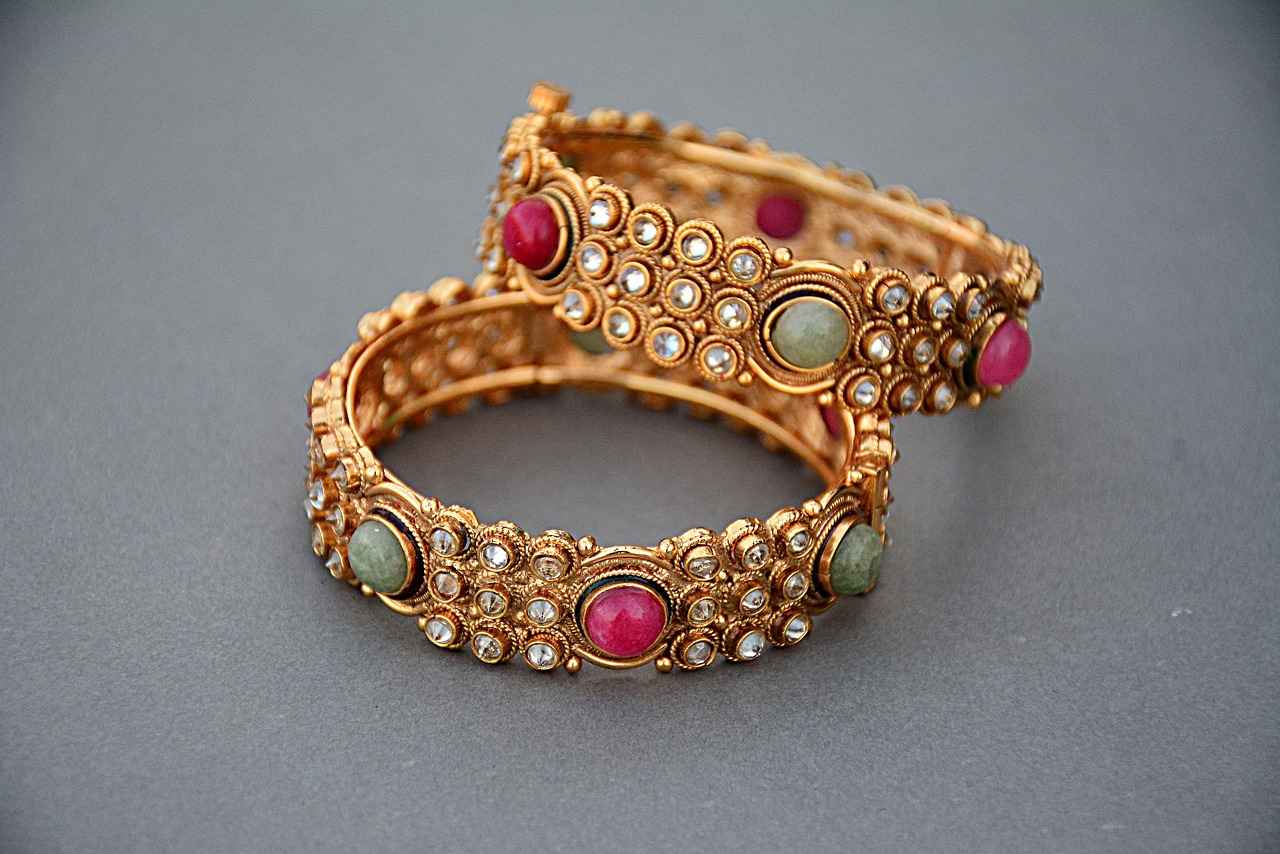
How to Store Your Jewelry Properly?
Proper storage is essential for maintaining the beauty and integrity of your jewelry. Whether it’s precious heirlooms or everyday pieces, the way you store them can significantly impact their longevity. In this section, we will explore best practices for jewelry storage, ensuring your items remain in pristine condition over time.
Jewelry can be vulnerable to various forms of damage, including scratches, tarnishing, and tangling. By understanding the importance of proper storage, you can prevent these issues and preserve the value of your pieces. Proper storage not only protects your investment but also keeps your jewelry looking its best.
- Necklaces: To avoid tangling, store necklaces flat or hang them on a designated jewelry stand. Consider using a jewelry roll or pouch for travel.
- Rings: Store rings in a soft-lined box or a dedicated ring holder. Avoid stacking them, as this can lead to scratches.
- Earrings: Use an earring organizer or a small box with compartments to keep pairs together and prevent loss.
- Bracelets: Like necklaces, bracelets should be stored flat or hung to prevent kinks and damage.
Choosing between a jewelry box and a display case can depend on your needs. Jewelry boxes offer protection from dust and scratches, while display cases allow for easy viewing. Consider the following:
- Jewelry Boxes: These provide a secure environment, keeping your pieces safe from environmental factors.
- Display Cases: Ideal for showcasing your collection, but ensure they are kept in a controlled environment to prevent exposure to light and humidity.
Environmental conditions can greatly impact your jewelry. Here are some factors to keep in mind:
- Temperature: Extreme temperatures can cause materials to expand or contract, leading to damage.
- Humidity: High humidity can lead to tarnishing, especially in silver jewelry. Keep your storage area dry.
- Light: Prolonged exposure to sunlight can fade gemstones and damage certain materials. Store your pieces in a dark place when not in use.
Taking additional precautions can further protect your jewelry:
- Use Anti-Tarnish Strips: Placing these strips in your jewelry box can help absorb moisture and prevent tarnishing.
- Keep Pieces Separate: Avoid storing different types of jewelry together to minimize the risk of scratches and tangling.
- Regularly Inspect Your Storage: Check your storage regularly to ensure everything is in good condition and to catch any potential issues early.
By following these best practices for jewelry storage, you can maintain the condition of your beloved pieces and enjoy them for years to come. Proper care ensures that your jewelry remains a source of joy and beauty, reflecting the memories and moments they represent.
Jewelry Boxes vs. Display Cases
When it comes to storing jewelry, the choice between jewelry boxes and display cases can significantly impact the preservation and presentation of your treasured pieces. Both options serve unique purposes and come with their own set of advantages and disadvantages. Understanding these can help you make an informed decision that best suits your needs.
Jewelry boxes are traditional storage solutions designed to keep your jewelry organized and protected. They often come with compartments and soft linings to prevent scratches and damage. Here are some pros and cons of using jewelry boxes:
- Pros:
- Protection: Jewelry boxes shield your pieces from dust, moisture, and physical damage.
- Organization: Compartments help keep different types of jewelry separate, reducing tangling and loss.
- Portability: Many jewelry boxes are compact and easy to transport, making them ideal for travel.
- Cons:
- Limited Visibility: Jewelry boxes can make it difficult to see all your pieces at once.
- Space Constraints: Depending on their size, they may not accommodate larger collections.
Display cases, on the other hand, are designed for showcasing jewelry rather than storing it away. They often feature glass fronts and lighting to highlight the beauty of the pieces. Consider the following pros and cons:
- Pros:
- Visibility: Display cases allow you to showcase your jewelry, making it easier to admire and access.
- Decorative Appeal: They can enhance the aesthetic of your space, serving as a beautiful focal point.
- Easy Access: Display cases make it convenient to grab your jewelry when needed, especially for daily wear items.
- Cons:
- Exposure to Elements: Jewelry in display cases is more susceptible to dust, light, and temperature changes, which can cause damage over time.
- Security Risks: Display cases may not offer the same level of security as a locked jewelry box, making valuable items more vulnerable to theft.
Choosing between a jewelry box and a display case ultimately depends on your personal preferences and lifestyle. If you prioritize organization and protection, a jewelry box may be the better option. Conversely, if you wish to showcase your collection and enjoy easy access, a display case could be more suitable.
Consider your collection size, the types of jewelry you own, and your home decor when making this choice. Additionally, some individuals may find that a combination of both solutions works best, allowing for both protection and display.
In conclusion, understanding the pros and cons of jewelry boxes versus display cases can help you make an informed decision that enhances the longevity and enjoyment of your jewelry collection.
Environmental Considerations
Environmental factors play a crucial role in the longevity of your jewelry. Understanding how elements like temperature, humidity, and light can affect your precious pieces is essential for their maintenance. This section will explore these factors in detail and provide practical tips on how to mitigate potential risks.
Extreme temperatures can cause materials to expand or contract, leading to potential damage. For instance, excessive heat can weaken the integrity of certain metals, while cold temperatures can make them brittle. To protect your jewelry:
- Avoid exposing your pieces to direct heat sources.
- Store jewelry in a climate-controlled environment.
- Remove jewelry before engaging in activities that involve extreme temperatures.
Humidity levels can significantly impact your jewelry, especially pieces containing gemstones or pearls. High humidity can lead to tarnishing in metals such as silver and can cause organic stones to deteriorate. To maintain optimal conditions:
- Keep your jewelry in a dry place.
- Use silica gel packets in storage boxes to absorb excess moisture.
- Regularly check for signs of tarnishing or damage.
Exposure to light, particularly ultraviolet (UV) light, can cause fading and discoloration of certain gemstones and metals. This is particularly true for colored stones and organic materials like coral and ivory. To protect your jewelry from light damage:
- Store pieces in a dark place or in opaque containers.
- Limit direct sunlight exposure, especially during long periods.
- Consider using UV-protective displays if showcasing your jewelry.
To ensure your jewelry remains in pristine condition, consider the following comprehensive strategies:
1. Regularly inspect your jewelry for signs of wear and tear.2. Clean your pieces according to their specific material needs.3. Invest in quality storage solutions that protect against environmental factors.4. Be mindful of where and when you wear your jewelry.
By taking these precautions, you can significantly enhance the lifespan of your jewelry. Remember, prevention is key. Understanding the environmental factors that can affect your pieces allows you to take proactive steps to mitigate risks, ensuring your cherished items remain beautiful for years to come.
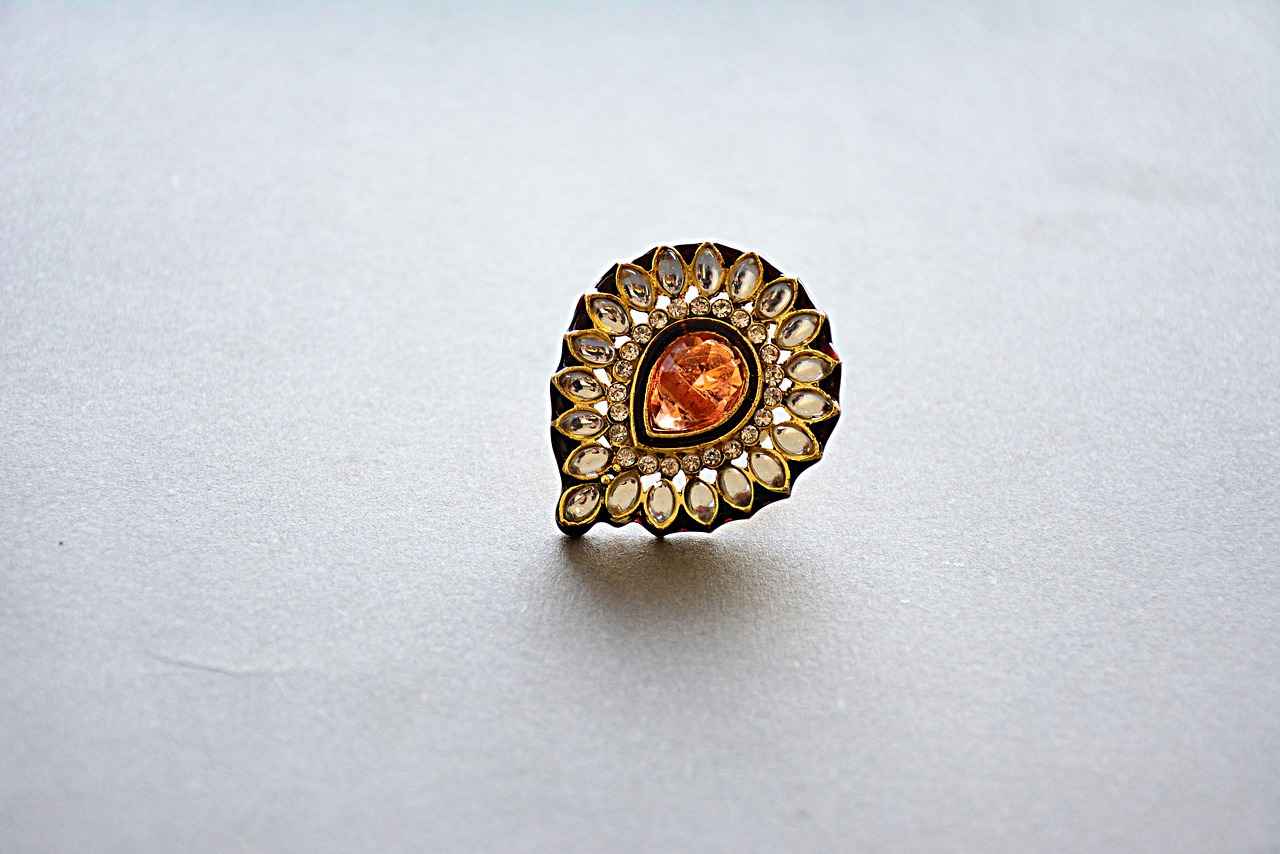
What Are the Best Practices for Jewelry Care?
Jewelry is not just an accessory; it is often a cherished possession that holds sentimental value. To ensure that your jewelry remains as stunning as the day you received it, implementing best practices for care is essential. These practices can significantly enhance the lifespan of your pieces, allowing you to enjoy them for years to come. Below, we delve into effective tips that are easy to incorporate into your daily routine.
Maintaining your jewelry is crucial for several reasons. First, it helps prevent damage and wear, which can lead to costly repairs. Second, regular care allows you to spot potential issues before they escalate. By dedicating a little time to your jewelry, you can ensure that it remains beautiful and functional.
- Clean Regularly: Depending on the material, clean your jewelry every few weeks. For example, gold and silver can be gently cleaned with a soft cloth and mild soap.
- Store Properly: Store your jewelry in a dry, cool place. Use separate compartments or pouches to prevent scratches and tangling.
- Avoid Exposure to Chemicals: Keep your jewelry away from harsh chemicals found in cleaning products, perfumes, and lotions, as they can damage the finish.
- Inspect Regularly: Make it a habit to inspect your jewelry for loose stones, broken clasps, or signs of wear. Early detection can save you from more extensive repairs.
- Remove Before Activities: Take off your jewelry before engaging in physical activities, swimming, or applying beauty products to minimize wear.
Different materials require specific cleaning methods. Here are some tips:
Gold: Use a mixture of warm water and mild soap. Soak for a few minutes, then gently scrub with a soft brush.Silver: A silver polishing cloth can remove tarnish. For deeper cleaning, use a mixture of baking soda and water.Gemstones: Check with a jeweler for recommendations, as some stones may require special care.
While regular maintenance is essential, there are times when professional help is necessary:
- Complex Repairs: If you notice significant damage, such as a broken chain or loose stones, consult a professional jeweler.
- Professional Cleaning: For intricate pieces or those with delicate settings, professional cleaning can restore their original shine without risking damage.
- Appraisals: Regular appraisals are important for insurance purposes. Seek a professional to ensure accurate valuations.
Implementing these best practices not only preserves the beauty of your jewelry but also enhances its value. Well-maintained pieces can be passed down through generations, serving as timeless reminders of special moments. Moreover, taking care of your jewelry can provide peace of mind, knowing that your cherished items are protected.
In conclusion, by adopting these simple yet effective care practices, you can significantly extend the lifespan of your jewelry. Remember, a little effort goes a long way in preserving the beauty and integrity of your treasured pieces.
Regular Inspections
When it comes to preserving the beauty and integrity of your jewelry, play a crucial role. By incorporating this practice into your routine, you can catch potential issues early, saving you time and money on repairs. But how can you effectively integrate this essential habit into your jewelry care regimen?
Regular inspections allow you to monitor the condition of your jewelry, ensuring that any signs of wear and tear are addressed promptly. This proactive approach not only helps in maintaining the aesthetic appeal of your pieces but also extends their lifespan. Jewelry is often a significant investment, and protecting it through routine checks is a wise choice.
The frequency of inspections can vary depending on several factors, including the type of jewelry, how often you wear it, and the materials involved. Here are some general guidelines:
- Daily Wear Items: For pieces you wear every day, such as wedding bands or favorite necklaces, inspect them at least once a month.
- Occasional Wear: Jewelry worn infrequently should be checked every three to six months.
- Seasonal Changes: Consider conducting a thorough inspection with each change of season, as environmental factors can impact your jewelry’s condition.
During your inspections, pay close attention to the following aspects:
- Loose Stones: Gently tap stones to see if they move. If they do, it’s time for a professional repair.
- Worn Settings: Inspect the prongs and settings for signs of wear, as these can compromise the security of your stones.
- Chain Integrity: Check for any signs of fraying or wear in chains, especially on necklaces and bracelets.
- Clasps: Ensure that clasps are functioning correctly; a broken clasp can lead to lost jewelry.
To make inspections a regular part of your jewelry care routine, consider the following tips:
- Set Reminders: Use your smartphone or calendar to set reminders for monthly inspections.
- Create a Checklist: Develop a simple checklist to follow during each inspection, ensuring that you don’t miss any critical areas.
- Involve Family Members: If you have family members with valuable jewelry, encourage them to join you in this practice.
Keeping a record of your inspections can be beneficial. Document any findings, repairs needed, and maintenance performed. This history not only helps you stay organized but can also be valuable for insurance purposes or resale.
While regular inspections can help you catch many issues early, some repairs require professional expertise. If you notice significant damage or if you’re unsure about the condition of your jewelry, don’t hesitate to consult a jeweler. They can provide a thorough evaluation and recommend appropriate repairs.
In summary, making a part of your jewelry care routine is essential for maintaining the beauty and longevity of your cherished pieces. By understanding the importance of these inspections, knowing what to look for, and integrating them into your routine, you can ensure that your jewelry remains in excellent condition for years to come.
Documenting Repairs and Maintenance
Keeping track of repairs and maintenance for your jewelry is essential for ensuring its longevity and beauty. By documenting your jewelry’s care history, you can stay organized and make informed decisions regarding future repairs or inspections. This practice not only helps you remember when and how your pieces were maintained but also enhances their value over time.
Maintaining a detailed record of your jewelry’s repairs and maintenance can provide numerous benefits:
- Preservation of Value: A well-documented care history can enhance the resale value of your jewelry.
- Informed Decisions: Knowing the maintenance history helps you decide when to seek professional help.
- Preventive Care: Regular documentation can highlight patterns in wear and tear, allowing for proactive maintenance.
When documenting repairs and maintenance, consider including the following information:
- Date of Service: Always note when the maintenance or repair was performed.
- Description of Work: Detail what repairs were made, such as tightening loose stones or replacing clasps.
- Service Provider: Record who performed the work, whether it was a professional jeweler or yourself.
- Cost: Keep track of the costs associated with repairs to help budget for future maintenance.
- Condition Before and After: Take notes or photographs to document the condition of the jewelry before and after service.
To keep your records organized, consider the following methods:
- Digital Records: Use a spreadsheet or a dedicated app to log your jewelry maintenance history.
- Physical Journal: Maintain a dedicated notebook or binder where you can write down details of each repair.
- Photo Documentation: Take pictures of your jewelry before and after repairs and save them in a digital folder.
It’s crucial to update your documentation immediately after any maintenance or repair work is completed. This practice ensures that your records are always current and accurate. Additionally, consider reviewing your documentation periodically to assess the overall condition of your jewelry and to plan for any upcoming maintenance needs.
By maintaining a comprehensive log of your jewelry’s repairs and maintenance, you can:
- Enhance Longevity: Regular tracking can help you catch potential issues before they become significant problems.
- Streamline Insurance Claims: If your jewelry is lost or damaged, having detailed records can simplify the claims process.
- Ensure Consistency: By knowing when and how your jewelry was last serviced, you can maintain a consistent care routine.
In summary, documenting repairs and maintenance is a vital practice for any jewelry owner. By keeping accurate records, you can preserve the beauty and value of your cherished pieces for years to come.
Frequently Asked Questions
- How often should I inspect my jewelry?
You should inspect your jewelry regularly, ideally every few months for items worn daily, and at least once a year for pieces worn occasionally. This helps catch any signs of wear before they become bigger issues!
- What are the common signs that my jewelry needs repair?
Look for loose stones, broken clasps, or any noticeable scratches and tarnishing. If your jewelry feels different or looks less shiny, it might be time for a check-up!
- Can I clean my jewelry at home?
Absolutely! You can use homemade solutions like mild soap and water for most items. Just be cautious with delicate materials and always dry them properly afterward!
- When should I seek professional help for my jewelry?
If you notice complex issues like significant damage or if you need an appraisal, it’s best to consult a professional jeweler. They have the expertise to handle intricate repairs safely!
- How should I store my jewelry to keep it safe?
Store your jewelry in a cool, dry place, preferably in a jewelry box or soft pouches to prevent scratching. Avoid exposure to direct sunlight and humidity to maintain their beauty!
